Review: Amazone ZATS Profis Hydro

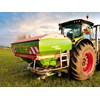
 Stainless steel components are used anywhere that is in constant contact with corrosive materials being spread.
Stainless steel components are used anywhere that is in constant contact with corrosive materials being spread.

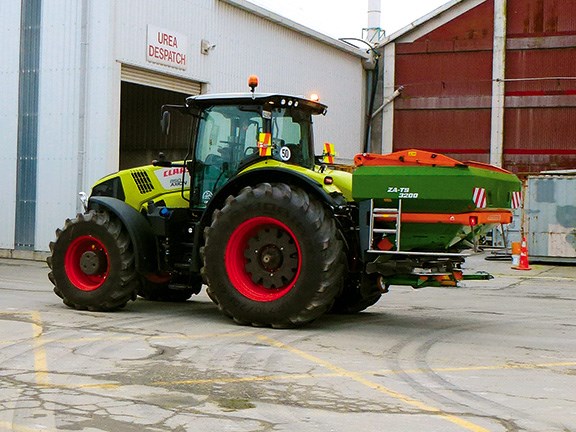

 Each side features a stainless steel ladder.
Each side features a stainless steel ladder.
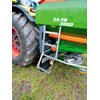
 Amatron 3 screen allows impressive control over the machine.
Amatron 3 screen allows impressive control over the machine.
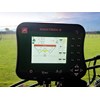
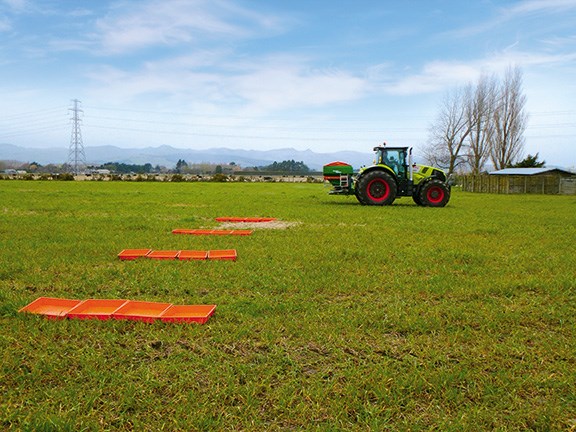 A simple spread test can be employed to calibrate the drop point and ensure an even spread.
A simple spread test can be employed to calibrate the drop point and ensure an even spread.

 Spreading discs feature two different length vanes that are used seperately.
Spreading discs feature two different length vanes that are used seperately.
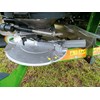
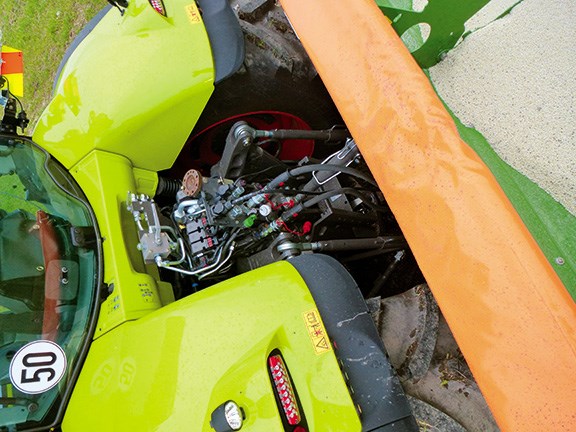

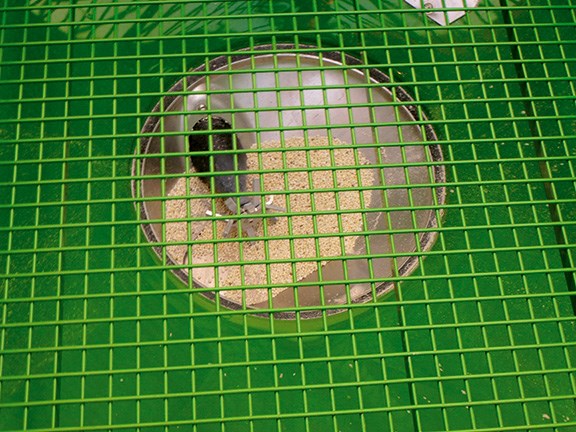 Grating in the hopper prevents lumps and foreign objects from reaching agitator.
Grating in the hopper prevents lumps and foreign objects from reaching agitator.



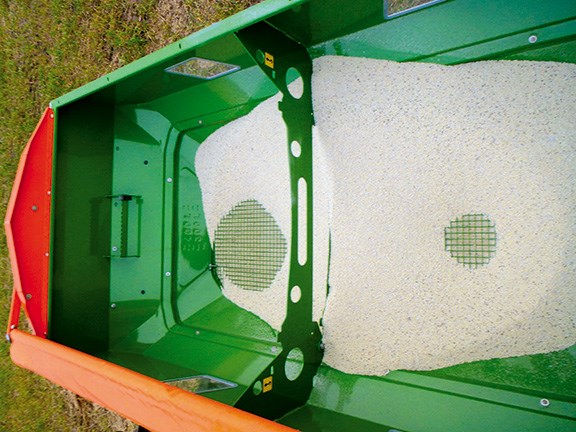 The large 3200-litre capacity hopper uses a single piece, deep-pressed base to prevent build-up and improve flow.
The large 3200-litre capacity hopper uses a single piece, deep-pressed base to prevent build-up and improve flow.

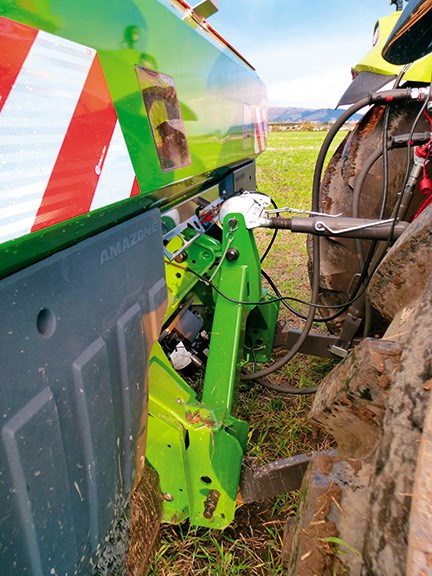 Three-point linkage frame uses a parallel linkage and weight cell to monitor amounts of material left.
Three-point linkage frame uses a parallel linkage and weight cell to monitor amounts of material left.


|

|
|
Stainless steel components are used anywhere that is in constant contact with corrosive materials being spread.
|

|

|
|
Each side features a stainless steel ladder.
|

|
|
Amatron 3 screen allows impressive control over the machine.
|

|
|
A simple spread test can be employed to calibrate the drop point and ensure an even spread.
|

|
|
Spreading discs feature two different length vanes that are used seperately.
|

|

|
|
Grating in the hopper prevents lumps and foreign objects from reaching agitator.
|

|

|
|
The large 3200-litre capacity hopper uses a single piece, deep-pressed base to prevent build-up and improve flow.
|

|
|
Three-point linkage frame uses a parallel linkage and weight cell to monitor amounts of material left.
|
Clever design features, technological advancements, precise spreading capabilities... the new Amazone ZATS Profis Hydro is certainly one feature-rich spreader.
I headed to Christchurch to check out an Amazone ZATS spreader. As I soon discovered, this machine combines with new technology to offer huge savings and benefits to farmers.
Hopper
The 700-litre base for the main hopper is actually made up of two hoppers, which deliver the material separately to each spinner.
Built from one piece of steel which is deep pressed to form its shape , this gives a smooth seam-free finish with a greater resistance to corrosion, while preventing build up of material and improving flow.
A welded steel bin above the hopper gives the machine I tested its 3200-litre capacity. Clear windows built into this hopper at the front and the back give a visual guide as to how much is left in the spreader.
Inside the hopper, a grate prevents unwanted objects or lumps from reaching the spinners. Interestingly, in order to meet safety standards this grate can only be opened with a special tool.
An aggressive looking agitator is positioned in the bottom of each hopper to keep material flowing freely. Cleverly they are electronically driven, so they prevent damaging the material being spread: if they jam on an obstacle, they automatically reverse to clear the blockage.
A safety ladder on each side of the machine gives access to the large top opening which is more than wide enough to load with most buckets or bulk bags. Topping it all off is a canvas cover to keep moisture out. In this machine it was opened and closed with a handle that could be used while standing on the ground, although a hydraulic cover is optional.
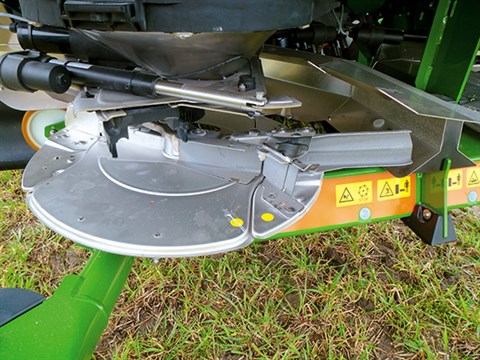
Frame
The hopper mounts to a separate weighing frame via three points; a fixed link at the top, along with two load cells at the bottom. These constantly weigh the remaining amount of material in the hopper and are impressively accurate on flat ground.
As the system relies on gravity, an optional inclination sensor may be required when working on hills for the monitor to more accurately calculate the hopper weight in sloping environments.
Fixed moulded plastic mudguards at the front of the frame behind the wheels are a simple but effective design feature, in order to keep mud flung up by the back wheels of the tractor from covering the spreader.
Four caster wheels on the bottom of the frame for storage are simply folded before the spreader is unhitched from the tractor. This is great if you have a concrete floor to store the machine on – as it can be wheeled around with the ease of a supermarket trolley – but is probably not much more than a parking stand on any other surface.
I also like the fact the wheels are permanently fixed to the spreader and fold up out of the way when hitched to a tractor, as they are always where you need them and never get lost.
While it was great to see the machine coupled as close as possible to the back of the tractor to keep the weight forward, it does make space quite tight between the machine and the back wheels when hitching up.
Drop point
Unlike many other machines, the Amazone has an adjustable drop point. A stainless steel bowl on the bottom of the hopper with an offset hole is rotated around the central point of the spinner. This makes it possible to maintain an even spread pattern, even as the spreading width increases.
The drop point can be either automatically or manually adjusted from the cab's control box. The drop point for spreading a wide range of materials over various spreading widths can be found from tables in the manual or even from a downloadable app for your smart phone.
Sample trays and measuring equipment that come with the machine can check spreading width accuracy or calibrate the drop point for unknown materials. The 16 trays are laid out in groups of four across half the spreading width.
Spinners
Two stainless steel spinners each use two sets of vanes on each disc. The first set is in use for normal spreading and feature angled tips (allowing the spreading width to be adjusted within the range by simply changing the spinner speed).
While this machine runs TS2 vanes on the spinners (giving them a spreading width from 18 to 36m which is ideal for most operations in New Zealand), there are two other set-ups which allow for spreading widths from 12 up to 54 metres. Impressively the machine has been certified in Australia for spreading urea out to 44 metres.
Each spinner also features a second set of shorter stubby vanes, used to reduce boundary spreading. This clever set-up involves a separate shaft inside the driveshaft for the spinners which can rotate the central delivery vanes on the disc by 10 degrees.
Drive for the spinners comes via a hydraulic motor powered through a load sensing coupling on the tractor. Electronic control is used to adjust spinner speed in order to achieve the desired spreading width.
On the cab monitor, the set spreading width is divided into eight sections on each side. The sections can be shut off one by one, starting from the outside on each side. This is an invaluable and very clever feature with huge savings when spreading triangles or thin strips.
Flow rate of material to the spinners is controlled with an electronically control shutter on the drop point. This not only ensures a fast and accurate shut off, but also varies the flow rate automatically as the spreading width is changed.
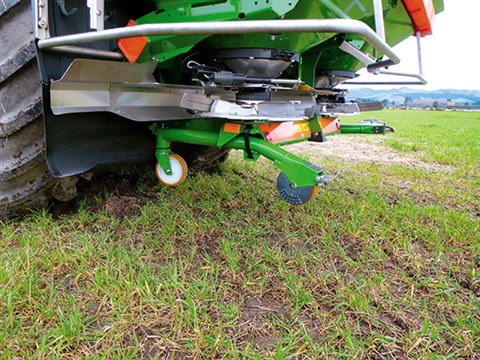
Controls
As the Amazone spreader is fully ISOBUS compatible, it can be run through any ISOBUS screen, although for our test we had the easy-to-use Amatron terminal set-up in the tractor.
Like any ISOBUS equipment there is a wealth of information that can be displayed through the screen or exported into the system via USB stick.
All of the features mentioned, such as spreading width, drop point, flow rate, section control and boundary control, can be controlled manually by pushing buttons on the monitor. But this relies on your quick reflexes; the real beauty of the system comes when you combine it with a GPS receiver.
The big Claas Axion 850 was running a Hemisphere Crescent GPS receiver on the roof. While pretty much any GPS that can be plugged into an ISOBUS controller will do, the fitted receiver takes the machine to a whole new level of simplicity and accuracy.
Once you've set your spreading width, application rate and drop point, you simply drive around the outside of the area to be spread to map it. Once this is calculated, you're all set.
Verdict
This is a seriously smart and well thought-out machine. The build quality throughout is excellent, with the single piece deep pressed hopper base and stainless steel components sure to extend the life span of the machine.
A stand-out point from nearly all other machines on the market is the moveable drop point, which can be calibrated with material being spread to achieve an even spread pattern regardless of the spreading width the operator has chosen.
Further potential savings become apparent when used with a GPS receiver. This gives amazing control and accuracy by automating most features of the spreader. This is a serious contender in the top of the highly accurate spreader market. For those spreading large amounts of high value materials, I'm sure the extra initial outlay will be easily recouped.
For the latest reviews of farm machinery, subscribe to Farm Trader magazine here.
Keep up to date in the industry by signing up to Farm Trader's free newsletter or liking us on Facebook





.jpg)
.jpg)
.jpg)

